Dubrovnik: Mass for Victims of Maritime Accident and Families
The terrible incident occurred when the inflatable boat carrying nine people was on its way back from the island of Sipan to Brsecine on the mainland.
Sites in Split: Cathedral of Saint Domnius
This Cathedral of St. Domnius (Katedrala Sv. Duje or Sv. Dujam) is the most visited attraction in Split, particularly as the imposing bell-tower is considered the emblem of the city. The church was originally built as Diocletian’s mausoleum; quite an oxymoron as the emperor was a known prosecutor of Christians. It was converted into a cathedral in the mid 7th century and the central place originally meant for Diocletian's sarcophagus was ritually destroyed.
The original octagonal shape of the mausoleum has been almost completely preserved although the domed ceiling no longer bears glittering mosaics. 24 columns surround the exterior of the structure and the domed interior is encircled with two rows of intricately decorated red granite Corinthian columns. The circular crown in the dome separating the two rows of pillars features detailed carvings of cupids, masks and human heads. There is a frieze showing the emperor with his wife, Prisca as well as four semi-circular and four rectangular niches.
Local artist Andrija Buvina carved two wooden cathedral doors in 1214 AD, which are still in place today. The fascinating Romanesque handicraft showcases 14 images illustrating the life of Jesus Christ with elements of gold plating.
The altar on the right is dedicated to Saint Domnius, a Christian martyr and 3rd century Bishop of nearby Salona (Solin). He was prosecuted under the rule of Diocletian. It is decorated with frescoes and its altar ciborium, or cup, are both in the late Gothic style. The altar to the left is constructed by famed Croatian architect Juraj Dalmatinac in the 15th century and is dedicated to another martyr and patron saint of Split, Anastasius
Left of the entrance is a six-sided podium in a precious green stone constructed in the 13th century. The main alter was built in the late 17th century and bears beautiful carvings of ten scenes from the old Testament. Another alter built in the late 18th century features relics of Saint Domnius. A chorus was added to the eastern side of the mausoleum with benches carved in the early 13th century.
The most apparent part of the cathedral is the 57-meter belfry towering high above the palace. Construction started in the 13th century and supposedly went on for 300 year until completion. It is designed in the Romanesque style although details from other architectural eras were incorporated throughout its many years of construction. An arched portal cuts through the bottom of the tower to the entrance of the cathedral. At the foot of the tower are two stone carved lions that guard the entrance at either side. Above the portal is a little sarcophagus containing the remains of two daughters of a previous king who died of the plague in the 13th century. It is possible to climb to stairs to the top of the tower where breathtaking 360-degree views of the city will welcome you.
In the adjoining sacristy building, you can also access the treasury containing sacral art works, 13th century chalices and containers, ancient garments and books dating back to the 6th century. Below the cathedral is the crypt, which was turned in to the Chapel of St. Lucy (Sv. Luce) during the Middle Ages.
Diocletian's Palace and its Most Visited Attractions
A little insight into the palace and its most visited attractions.
DIOCLETIAN'S PALACE
The Emperor, Diocletian constructed his retirement palace in about 300AD where he resided until his death. After his death, the palace became home to the various expelled emperors and their family. Eventually when the Avars and Slavs conquered the surrounding areas of Split, the city’s residents moved within the palace walls. More and more settlements were built within the palace and eventually the palace became the town itself. Today Diocletian’s Palace is considered one of the only cultural monuments in the world in which people still live. In the 17th century, a new defense system in the form of bastions was built around the palace by the famous Frenchman; A. Magli. Diocletian’s Palace is an example of the most magnificent Roman architecture on the Adriatic coast. It is important to mention that the palace also serves as a residential area today and is therefore open to all. Due to this, it is near impossible to control the flow of visitors to the site. There are many attractions within the palace, but the most viewed is the St. Duje Cathedral on the Peristyle square. Other popular sites are the Temple of Jupiter and the cellars of the palace. The narrow, crooked streets with various shops are also popular among tourists.

Aerial View of Diocletian's Palace
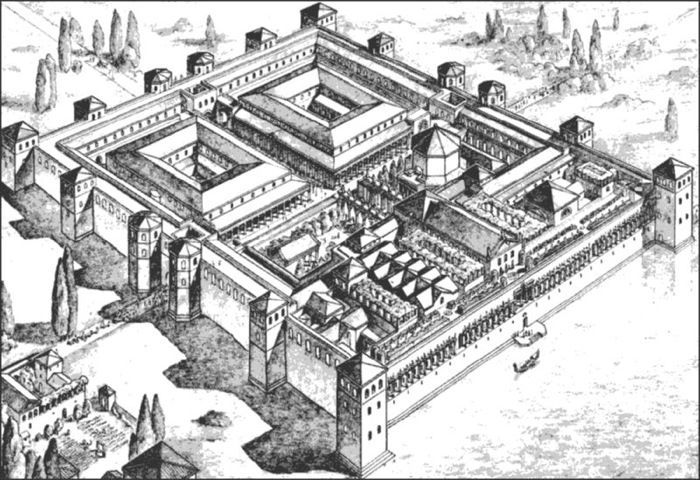
Drawing of the palace in its original plan
ST. DUJE (DOMNIUS) CATHEDRAL
The St. Duje Cathedral and bell tower is known as one of the oldest Catholic Cathedrals in the world and is located within the palace walls in the central square of Peristyle. The construction of this cathedral only began in the 13th century, long after the death of Emperor Diocletian as he was a persecutor of Christians. Ironically, this Cathedral was once the emperor’s mausoleum. The bell tower however, took about 300 years to construct. The cathedral has an octagon shape which is surrounded by a colonnade. Next to the entrance to the cathedral are is a black sphinx from 15 BC which was brought from Luxor in Egypt. In the cellar of the cathedral, tourists who enjoy historical religious artifacts can visit the treasury. Visitors can also climb to the top of the bell tower to enjoy 360 degree views of Split.
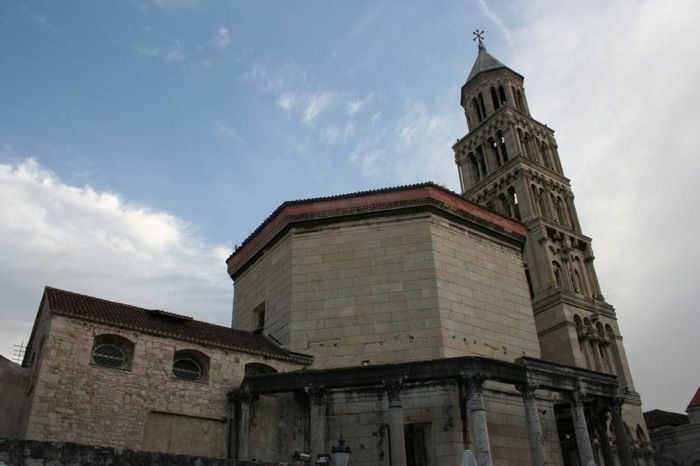
St. Duje's Cathedral and Bell Tower

Egyptian Sphinx
THE BASEMENT HALLS
The substructure of Diocletian’s Palace consists of many rooms and the wallwork as supporting walls for the emperor’s residents above. In the past, these rooms were of no use as they were under water. The seaside entrance to the palace allowed ships and boats to enter the through this gate, and anchor below the place and enter straight onto the Peristyle central square. Myths say that the persecuted Christians were left in this substructure in the small rooms, preventing the bodies from flowing out. In the 1850’s, architect Vicko Andric started a project which drained and cleaned the cellars of Diocletian’s Palace, and created a Riviera on the seaside front of the palace which is known as Riva today. Today the cellar is the main area for souvenir shops that lead to the stairs that go the Peristyle square and St. Duje’s cathedral. Other parts of the substructure are used as temporary art exhibitions or function spaces.
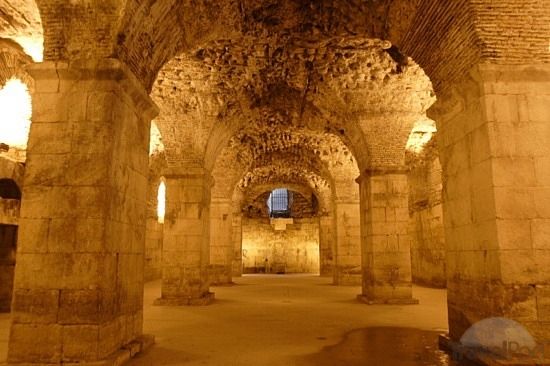
JUPITER'S TEMPLE
Jupiter was the name of Diocletian’s father and was also the highest Roman god. After the fall of the Roman Empire, the temple was converted into a Cathedral baptistery. Inside the small temple, there are two medieval stone coffins where the archbishops of Split, John and Luka are buried. Inside the temple there is a statue of Saint John made by the famous sculpture, Ivan Mestrovic. In the center of the temple there is a font basin which today is used as a wishing well as visitors throw coins in it. Originally, the temple never had a roof and this caused the rapid deterioration of the site due to environmental factors. The imposing arched ceiling has a series of face sculpured looking down on you. At the entrance of the temple, another Eqyptian sphinx can be found however, it has been vandalized and no longer has a head.
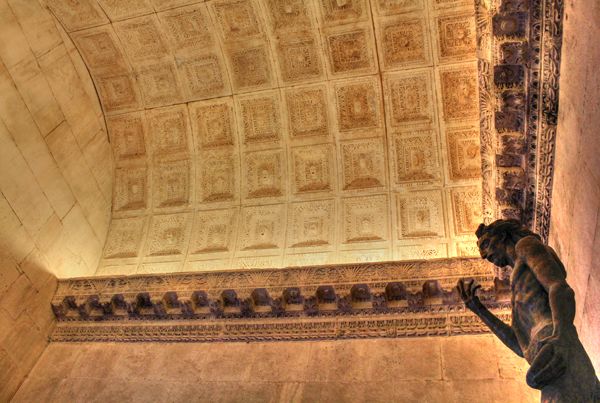
Interior pf Jupiter's Temple: Arched ceiling and statue of St. John
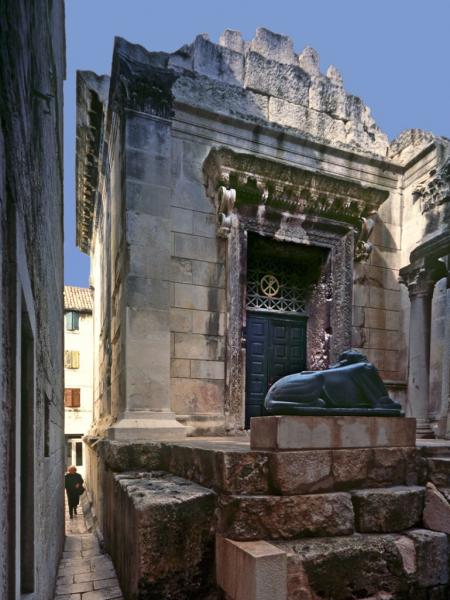
Jupiter's Temple with Headless Sphinx in Front
STATUE OF GRGUR NINSKI
The statue of Grgur Ninski, made my Ivan Mestrovic in 1929, is another well visited site for tourists. Previously, the statue was located in the central square of Peristyle but was moved in World War II, cut into three and dug underground to hide it from the occupying forces. It was re-erected outside the palace wall by the East, “Golden Gate” entrance. Grgur Ninski was the arch bishop of Split in the 10th century who also strongly opposed the Pope. Services were always held in Latin which was not understandable to the people of Croatia. Grgur Ninski then changed his services into the Croatian language which created more worship among the people as they understood their services and prayers. Some wearing has happened as it is believed that touching the toe of the statue brings luck. Over the years as more tourist visit the sight, it has been rubbed golden.
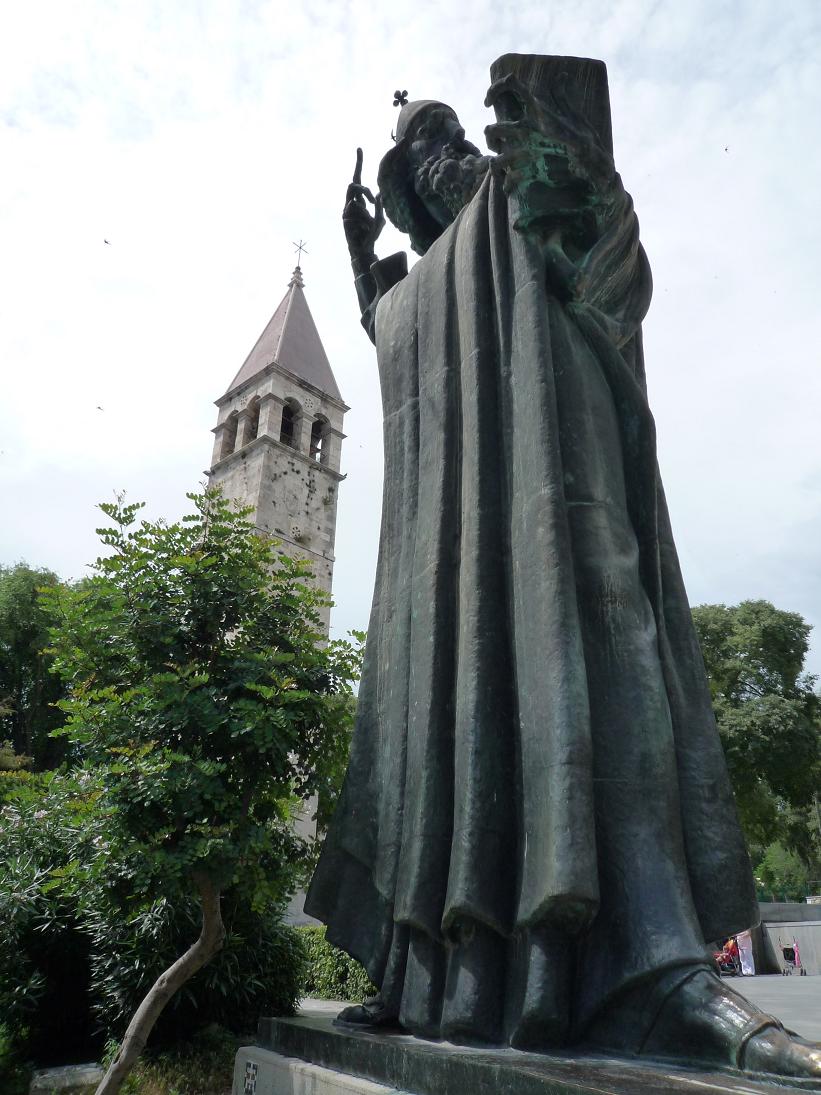
Statue of Grgur Ninski
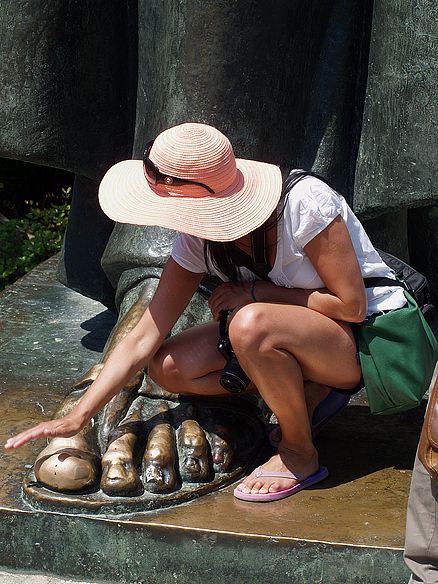
Make a wish!

